Septentrio mosaic-go X5, a GNSS receiver
Introduction
I have a global navigation satellite system (GNSS) receiver, mosaic-go CLAS, but also mosaic -go x5 receiver was also introduced.
The CLAS version can use CLAS (centimeter level augmentation service, pronounced as Cirrus) of Japan’s Quasi-Zenith Satellite, Michibiki. The x5 version, on the other hand, can instead receive the E6B signal from the European Galileo satellite and the B2b signal from the Chinese BeiDou satellite. In particular, as far as I know, the only receivers that can receive B2b signals are Pocket SDR and this x5 receiver. The CLAS version receiver was so good that I also introduced the x5 version.
Here, I aim to output the raw data of the E6B and B2b signals from this receiver.
Receiver access from network
I purchased this mosaic-go x5 receiver from CQ publishing.
Like the CLAS version, this x5 version receiver is housed in a beautiful palm-sized metal housing. Connect the antenna to this receiver, connect it to a computer via USB, and access http://192.168.3.1/ with a browser to display the management screen.
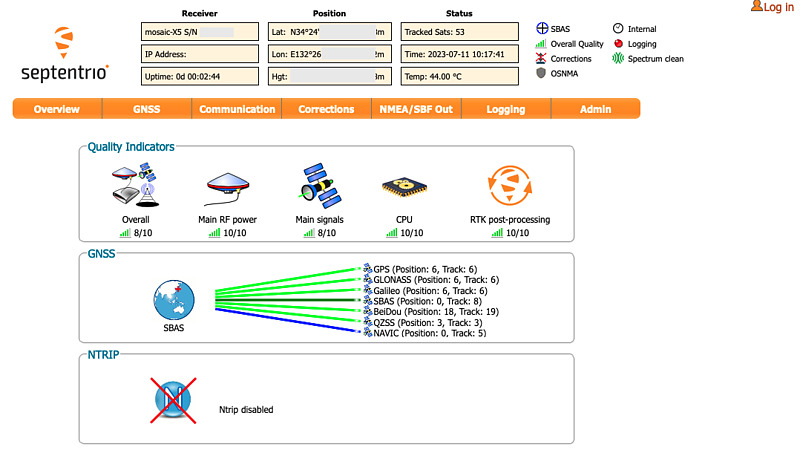
It is inconvenient that this receiver can only be used on specific PCs. In order to use this receiver from other PCs via the network, connect this receiver to a Linux PC and use the socat command to access something like http://my-pc-address:1080/. Now, we can be accessed the receiver with port number 1080 of the computer.
socat TCP4-LISTEN:1080,fork TCP4:192.168.3.1:80
Alternatively, we can use the Linux process management shell script govern.sh to start socat. Placing the following configuration file mosaic_tcp.conf.sh in the local directory under your home directory, we can start socat with a command, govern.sh mosaic_tcp.conf.sh start.
RIP=192.168.3.1
RPORT=80
LPORT=1080
MARK="TCP4-LISTEN:${LPORT},fork TCP4:${RIP}:${RPORT}"
CMD=socat
ARGS="${MARK}"
Firmware upgrade
I updated the firmware to the current latest 4.14.0 so that I could receive BeiDou B2b signals. I downloaded the firmware from Septentrio’s x5 receiver support page and apply the new firmware on the receiver through Admin->Upgrade screen.
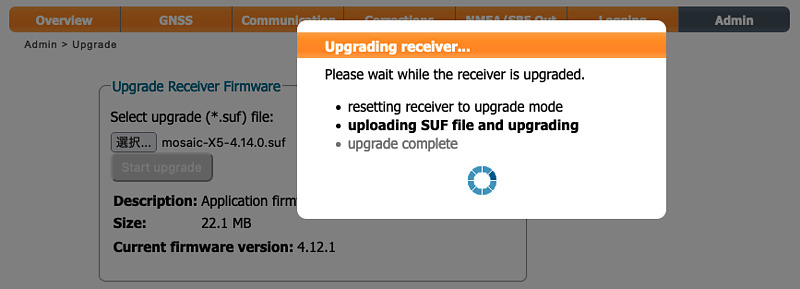
Here is the Receiver Identification on the Admin->About screen:
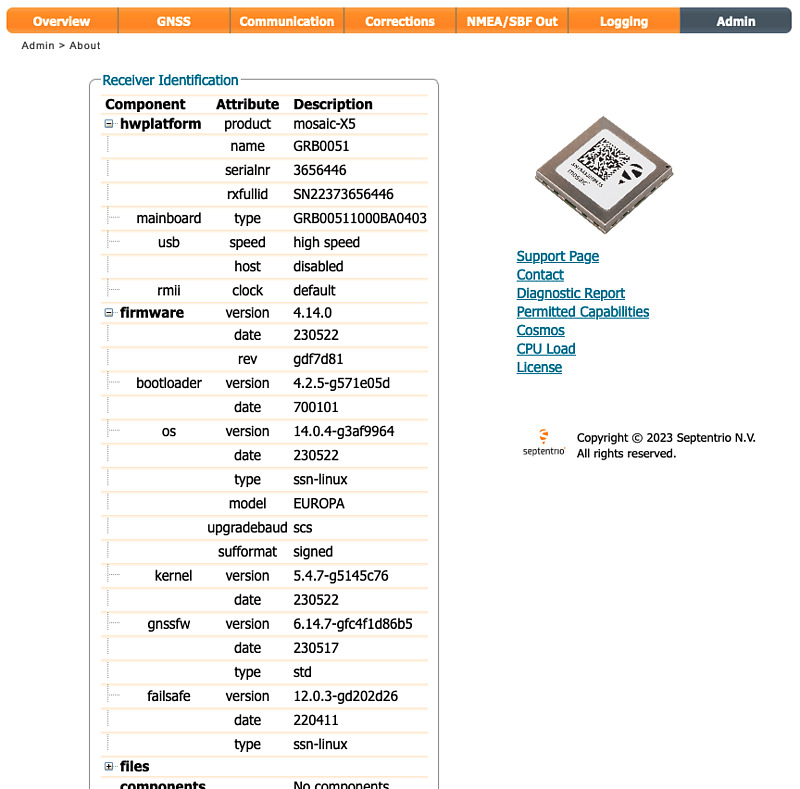
According to Admin->About->Permitted Capability, this receiver is allowed to receive many signals.

configuration
By default, the x5 receiver does not receive Galileo HAS (high accuracy service) E6B signals or BeiDou PPP-B2b B2b signals, which deliver high accuracy satellite augmentation information. Even if these reception settings are simply turned on, the number of tracking channels become insufficient to catch these signals. Therefore, I gave up receiving some satellite signal reception.
On the setting screen Admin->Exper Control->Control Panel->Navigation->Advanced User Settings->Satellite Tracking, I have all Russian GLONASS and SBAS (satellite based augmentation system) All of India’s NAVIC (Navigation for Indian Constellation) and Michibiki (QZSS: Quasi-Zenith Satellite System) J01, J05, and J06, which are not currently in operation, were turned off.
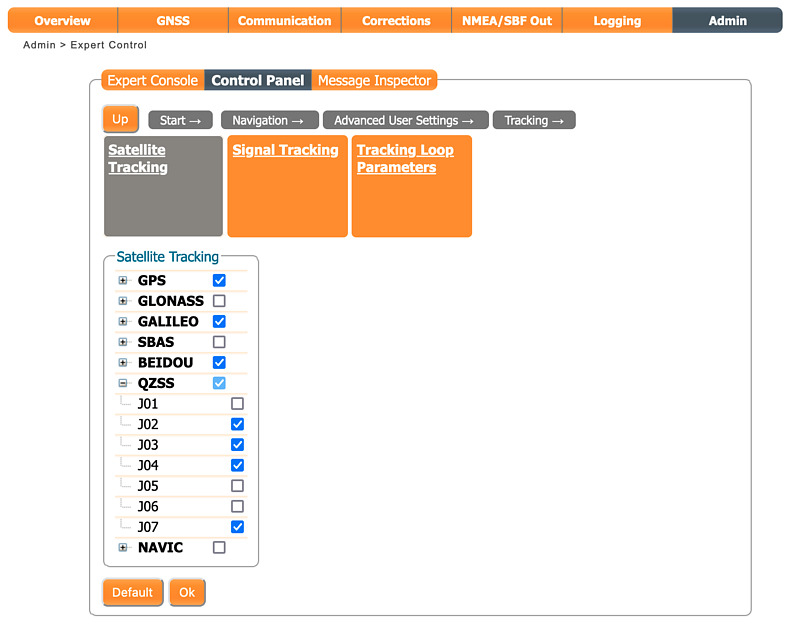
And in Admin->Exper Control->Control Panel->Navigation->Advanced User Settings->Signal Tracking, turn on E6B signal GALE6BC and B2b signal BDSB2b.
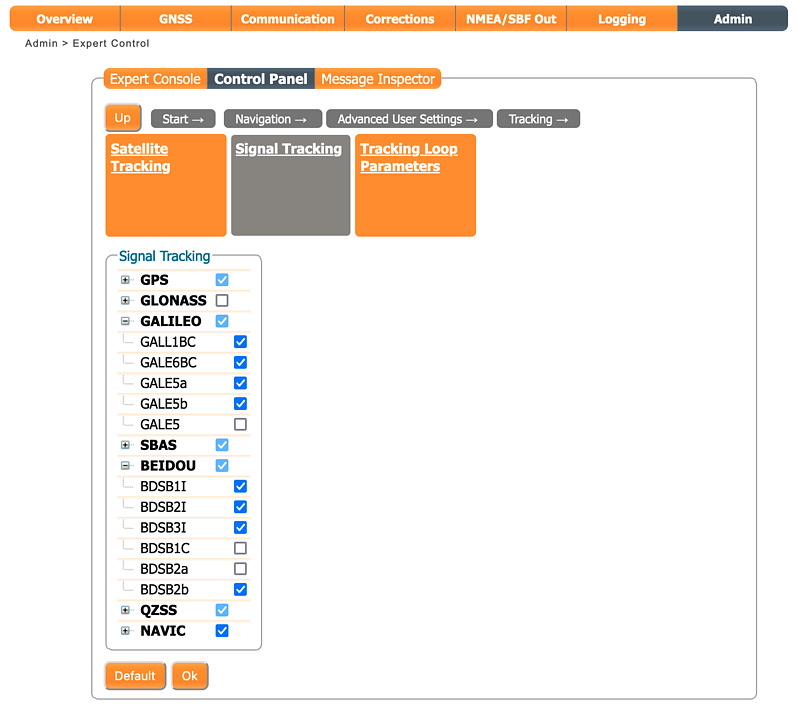
Raw data output for E6B and B2b signals
Next, I confirmed that Galileo E6B and BeiDou B2b signals could be received. I selected Galileo on the GNSS->Satellites and Signals screen. The E6BC signal (in dB-Hz) was being observed. E6B signals had been observed from 5 satellites. Therefore, it seems that HAS information can also be decoded.
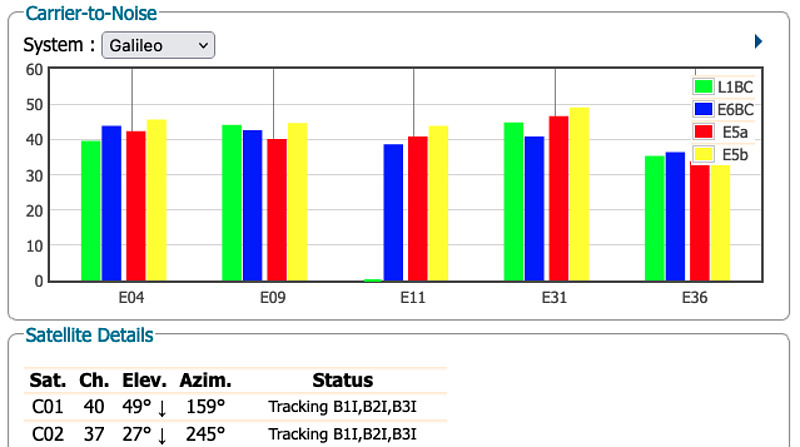
Next, I checked BeiDou. PPP-B2b is to be broadcast from the BeiDou-3 geostationary satellite. Accoding to the [List of Positioning Satellites](https://qzss.go.jp/en/technical/satellites/index.html# BeiDou), PPP-B2b seems to be available if C60 can be received. Reception of B2b signal of C60 was confirmed.
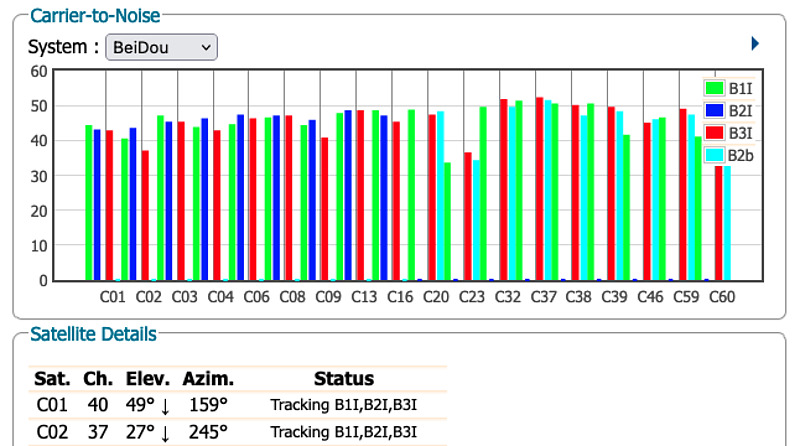
And I want to be able to output the raw data of the E6B and B2b signals. Select New SBF Stream from NMEA/SBF Out, OnChange (output as soon as information is received from the satellite) in Interval, and GALRawCNAV ( Galileo commercial navigation message) and BDSRawB2b (BeiDou B2b message) and press the Finish button.
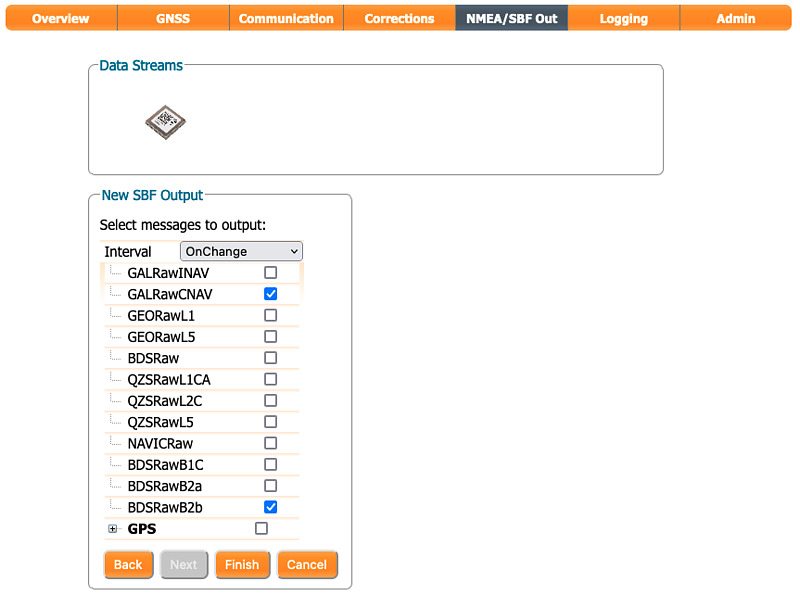
Then, for example, write the mosaic_raw.conf.sh file in the local directory of the Linux PC connected to this receiver as follows:
RIP=192.168.3.1
RPORT=2000
LPORT=2000
MARK="TCP4-LISTEN:${LPORT},fork TCP4:${RIP}:${RPORT}"
CMD=socat
ARGS="${MARK}"
Entering a command, govern.sh mosaic_raw.conf.sh start If you start it with , we can obtain this raw data at a TCP port of 2000. You can obtain the raw data output from another Linux PC by using the nc command, nc my-pc-address 2000.
I would like to make a decoder for Septentrio raw data and try to dump HAS and PPP-B2b augmentation information.
Conclusion
A Septentrio mosaic-go x5 receiver was introduced to enable raw data output of Galileo E6B and BeiDou B2b signals. I aim to be able to observe Galileo HAS information and BeiDou PPP-B2b information with this receiver.